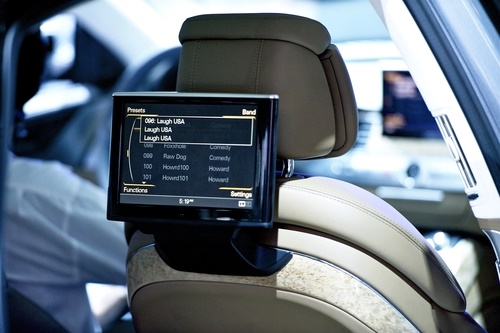At its best, automotive technology makes your driving experience safer and more enjoyable.
Features like adaptive cruise control also help you save more at the pump by improving your fuel economy.
Similar automotive technologies like automatic emergency braking could literally save your life.
Then there are automotive technologies that simply make life easier (e.g., voice recognition and USB ports) or make for a more comfortable ride (e.g., massaging seats).
As amazing as all of this automotive technology is to experience, there’s no substitute for getting regular inspections and maintenance done on your vehicle.
New technologies might tell you that your transmission needs maintenance by flashing an icon on your dash, but ultimately a mechanic needs to pop open the hood and get to work.
Adaptive Cruise Control
Manual cruise control can be a life saver in its own right. That’s the feature on most new cars that lets you press a button and maintain one speed on the highway.
Highway driving, in general, is easier on your engine and gives you better fuel economy than stop-and-go city driving.
The cool thing about new automotive technology like adaptive cruise control is that they make use of sensors dotted all around your car to keep track of other cars.
It works like this: The radar and camera systems on your vehicle check in front of and behind your vehicle to keep tabs on other drivers.
Once you know where other drivers are on the road and the speed they’re going relative to your vehicle, adaptive cruise control will automatically speed up or slow down to maintain a constant speed and make your drive less fatiguing.
Connected Mobile Apps
A lot of vehicles with a push-button ignition feature can also be revved up remotely with a connected mobile app.
These connected apps also give real-time monitoring of your battery and tire pressure, which leads to fewer breakdowns.
Teen Driver Technology
Parents might be interested in this automotive technology because it can clue you in to a car that’s been driven over, say, 70 miles per hour or cut off the stereo when the driver’s seat belt isn’t on.
Voice Recognition
Voice recognition can make driving more safe and convenient because you can get answers to your questions without taking your eyes off the road.
If your vehicle has this technology you can get directions, make a call and order from a restaurant, or queue up your favorite songs.
You should obviously never text and drive. That said, voice recognition software makes it easier to dictate a text and send it to a recipient on your connected Smartphone.
That’s pretty cool…and much safer than playing with your phone as you’re changing lanes on the highway. Another example of an automotive technology that makes life safer and more convenient.
Automatic Emergency Braking
Even with USB, auxiliary ports, and Sirius XM radio that lets you jam out on your way to work, driving can be tedious and your attention can wander.
That’s where automatic emergency braking comes in. This automotive technology uses many of the same sensors as adaptive cruise control.
Using an ingenious radar system that bounces a signal under your car – and two or more cars ahead – to detect danger, an emergency braking system comes standard on many newer vehicles.
Although automotive technology like automatic braking system can have quicker reflexes than the human brain, your vehicle still needs to have its brake pads and rotors checked out and/or replaced every 30,000-60,000 miles for this feature to work at its best.
For routine maintenance, inspections, and parts replacements come into All Around Auto Repair.




